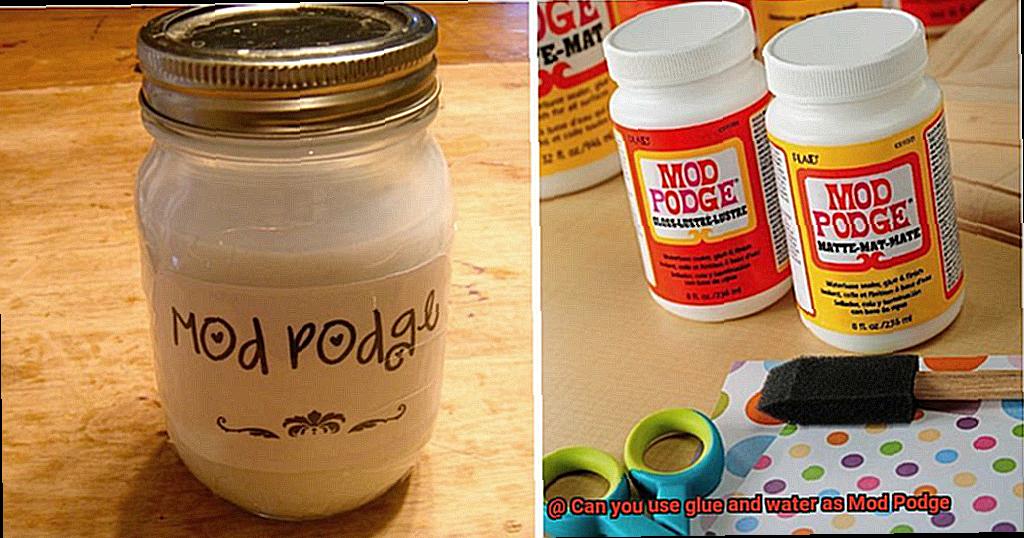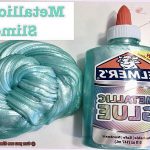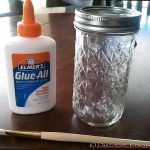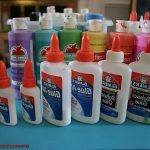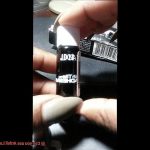Are you in the middle of a crafting project and suddenly realize you’re missing the holy grail of crafting tools – Mod Podge? Fear not, my fellow crafter. There’s a DIY solution that many crafters swear by – using a simple mix of glue and water as a substitute for Mod Podge. But does it really work?
In this blog post, we’ll explore everything you need to know about using glue and water as Mod Podge. We’ll dive into the recipe, compare it to the real deal, and show you how to use it in your crafting projects. Whether you’re an experienced crafter or just starting out on a budget-friendly journey, keep reading to find out if glue and water can truly replace the iconic Mod Podge.
So let’s get started on this epic quest to discover if glue and water can fill the shoes of our beloved Mod Podge. After all, every crafter knows that when one door closes, another opens – or in this case, when one bottle of Mod Podge runs dry, another DIY solution emerges.
What is Mod Podge?
Contents
- 1 What is Mod Podge?
- 2 Can You Use Glue and Water as a Substitute for Mod Podge?
- 3 Advantages of Using Glue and Water as a Substitute for Mod Podge
- 4 Disadvantages of Using Glue and Water as a Substitute for Mod Podge
- 5 Tips for Making Homemade Mod Podge
- 6 How to Use Glue and Water As a Substitute for Mod Podge
- 7 Alternatives to Using Glue and Water As a Substitute for Mod Podge
- 8 Conclusion
Its unique formulation includes a blend of water, PVA glue (polyvinyl acetate), and other ingredients that give it its particular properties.
One of the most significant advantages of Mod Podge over other adhesives is its ability to dry clear, making it an excellent choice for projects where the adhesive needs to remain hidden. Moreover, this crafting glue boasts a relatively fast drying time, allowing crafters to complete projects quickly and efficiently.
The versatility of Mod Podge is unmatched as it comes in various formulas, each designed to cater to specific crafting needs. Whether you are working on fabric, paper, wood, or other materials, there is a Mod Podge formula that’s right for your project. Additionally, you can choose between a glossy or matte finish to achieve your desired look.
While many wonder if they can substitute regular glue and water for Mod Podge, it’s important to note that the homemade version may not be as durable as store-bought Mod Podge. For a strong and long-lasting adhesive, investing in a bottle of Mod Podge is worth considering. However, if you’re in a pinch and don’t have any on hand, mixing equal parts white school glue and water can work in a pinch.
Can You Use Glue and Water as a Substitute for Mod Podge?
The answer is a resounding yes. This cost-effective alternative can help you create beautiful decoupage, scrapbooking, and other art projects without breaking the bank.
To create your homemade Mod Podge substitute, simply mix equal parts of white school glue and water until it’s smooth and creamy. However, keep in mind that while this method may work as an adequate temporary solution, there are some differences between using glue and water as a substitute for Mod Podge and using the actual product.
Mod Podge has additional ingredients that make it more durable and long-lasting than simple glue and water. As a result, it may not be suitable for all projects or for long-term use. Similarly, there are various types of Mod Podge available on the market, each with its unique properties and uses. While simple glue and water may work as a substitute for the basic Mod Podge product, it may not be suitable for all types of Mod Podge.
Advantages of Using Glue and Water as a Substitute for Mod Podge
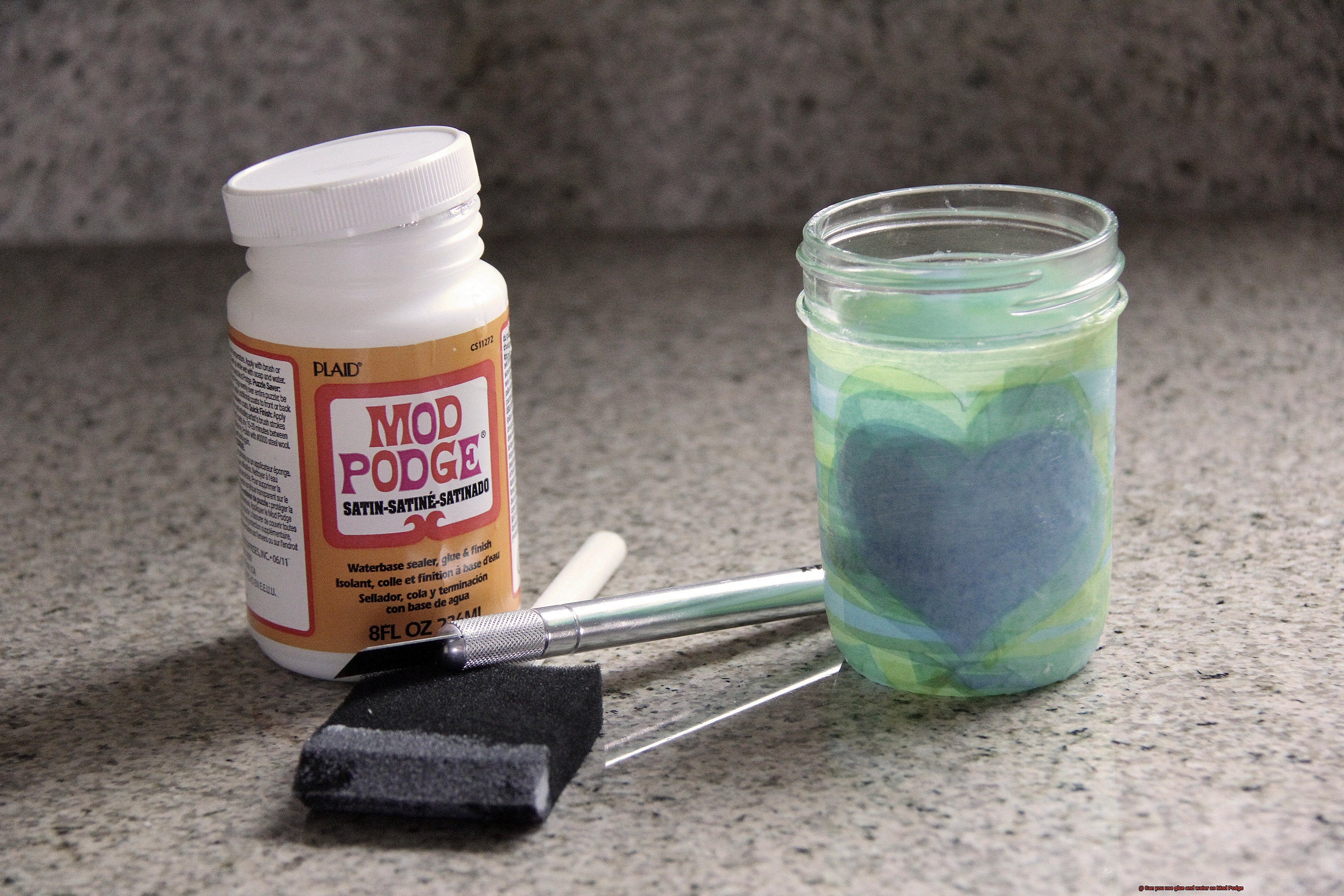
As an expert in this topic, I can confidently say that using glue and water as a substitute for Mod Podge offers several advantages.
First and foremost, cost-effectiveness is a major advantage of this DIY alternative. Mod Podge can be quite pricey, especially when working on larger projects. But with glue and water, you can achieve similar effects without breaking the bank. Both ingredients are affordable and easy to find at any craft store or even at home.
Another advantage is the ability to customize your mixture. By adjusting the ratio of glue to water, you can create different finishes and textures to suit your personal taste. For a matte finish, mix equal parts of white glue and water. For a glossier finish, add more glue than water. The possibilities are endless.
Furthermore, using glue and water gives you more control over the consistency of your mixture. Mod Podge can be quite thick, which may not be suitable for all projects. With glue and water, you can adjust the ratio to achieve the perfect consistency for your needs. This allows for greater flexibility in crafting.
Last but not least, using glue and water as a substitute for Mod Podge is also safer, especially for young children. Mod Podge contains chemicals that can be harmful if ingested or inhaled, making it less ideal for kids to use. On the other hand, glue and water are non-toxic and safe for children to handle.
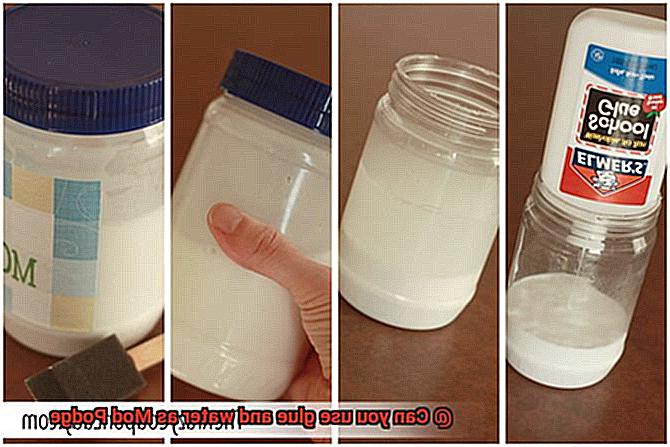
Disadvantages of Using Glue and Water as a Substitute for Mod Podge
While using glue and water as a substitute for Mod Podge may seem like a cost-effective solution, it’s important to consider the disadvantages before diving in.
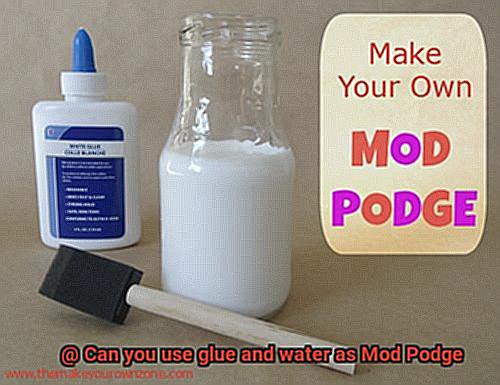
Firstly, consistency is key in crafting. Mod Podge has a specific thickness that allows for easy application and a smooth finish. However, using glue and water may create lumps or unevenness in your project, which can significantly affect the overall outcome. The inability to achieve the same level of consistency as Mod Podge may result in a less polished final product.
In addition to consistency, durability is also essential. Mod Podge is designed to withstand wear and tear over time, ensuring your project lasts for years to come. In contrast, using glue and water may not have the same level of durability, leaving your project vulnerable to falling apart or becoming damaged over time. This can be especially problematic if you plan on using or displaying your creation frequently.
Adhesion is another critical factor to consider. Mod Podge is formulated to adhere a variety of materials together securely, ensuring that they stay in place throughout the crafting process and beyond. However, using glue and water may not provide the same level of adhesion, resulting in materials coming apart or shifting during the crafting process. This can be frustrating and result in wasted time and supplies.
Finally, protection is necessary to ensure your project lasts for years to come. Mod Podge offers protection against moisture and other environmental factors that can damage your project over time. Using glue and water may not provide the same level of protection, leaving your project vulnerable to damage from moisture or other environmental factors.
Tips for Making Homemade Mod Podge
Homemade Mod Podge is not only cost-effective, but it also allows you to customize your crafting projects with ease. Here are some tips for making homemade Mod Podge.
Choose the Right Glue
The glue you use will determine the texture and finish of your Mod Podge. For a glossy finish, clear drying glue is the way to go. For a matte finish, white school glue is your best bet.
Get the Ratio Right
The key to making great homemade Mod Podge is getting the ratio of glue and water right. A common ratio is two parts glue to one part water, but you can adjust this based on what consistency you’re aiming for.
Use Distilled Water
Tap water can contain impurities that may affect the quality of your Mod Podge. To avoid this issue, use distilled water.
Stir Thoroughly
Make sure to mix the glue and water together well, so that they are fully combined.
Store Properly
Keep your homemade Mod Podge fresh by storing it in an airtight container. This will help prevent it from drying out or becoming too thick.
Experiment with Additives

Get creative with your homemade Mod Podge by adding other ingredients to customize it for your project. For example, adding a little bit of white vinegar can help prevent yellowing over time.
How to Use Glue and Water As a Substitute for Mod Podge
Crafting and DIY projects often require adhesive and sealant materials, and Mod Podge is a popular choice for this purpose. However, it may not always be available or affordable. In such cases, you can use glue and water as a substitute for Mod Podge. Here’s how to make and use homemade Mod Podge effectively.
Making Homemade Mod Podge
To make homemade Mod Podge, mix equal parts of white school glue and water in a container. You can adjust the ratio based on the consistency you want. Mix the ingredients well until they are thoroughly combined. Your homemade Mod Podge is now ready to use.
Applying Homemade Mod Podge
Use a brush or sponge applicator to apply the homemade Mod Podge evenly on your project’s surface. Press down any bubbles or wrinkles that may appear. It will dry clear, so don’t worry about visible streaks or bubbles.
Limitations of Homemade Mod Podge
Homemade Mod Podge may not have the same adhesive power or longevity as store-bought Mod Podge. You may need to apply multiple coats or use additional adhesives (such as tape or glue dots) to ensure that your project stays together. Be mindful of the surface you’re using it on and test it out before committing to using it on your entire project.
Using Homemade Mod Podge for Decoupage
Homemade Mod Podge is an effective decoupage medium for attaching paper or fabric to surfaces. Apply a layer of the mixture on the surface, place the paper or fabric on top, and then add another coat of the mixture over it. It will dry clear and give your project a professional finish.
Cost-Effective Solution
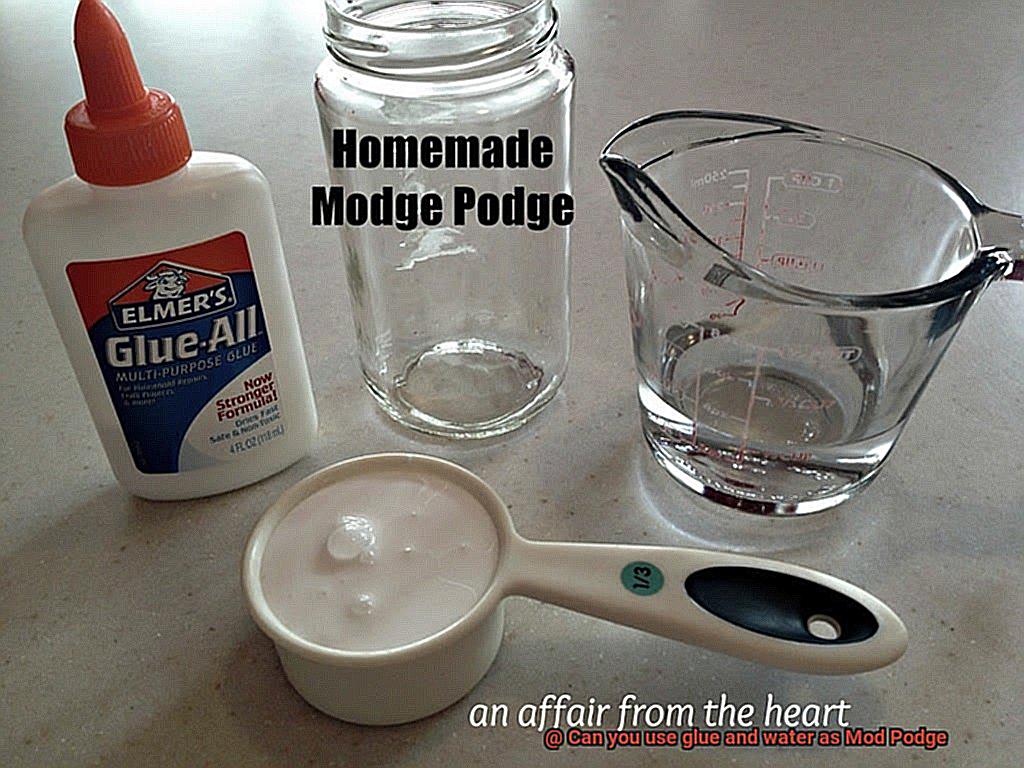
Using glue and water as a substitute for Mod Podge can be a cost-effective solution for those who are on a budget or in a pinch. It can become a go-to adhesive and sealant in your crafting toolkit with some experimentation and practice. Save money and use the materials you have at home instead of buying expensive craft supplies.
Alternatives to Using Glue and Water As a Substitute for Mod Podge
Fear not, as there are other options available that cater to your needs. While glue and water may be a popular substitute, let’s explore some other options that can take your DIY project to the next level.
First up, a mixture of equal parts white glue and water is an excellent option for basic DIY projects. It can be applied in the same way as Mod Podge, but may not provide the same durability or clarity. Be sure to allocate ample drying time before handling your project.
If you’re looking for a glossy finish on small projects or decorative items, clear nail polish is an excellent option. Just apply a thin layer and wait for it to dry completely. This option may not be ideal for larger projects, but it’s perfect for adding a finishing touch to small details.
For those who prefer eco-friendly alternatives, a mixture of flour and water can be used instead of Mod Podge. Although this option is more natural, it may not provide the same durability or clarity as Mod Podge. However, it’s an ideal choice for those who want to avoid harsh chemicals and prefer natural ingredients.
It’s important to experiment with different options to find the best alternative for your specific project. The perfect substitute will depend on the materials used and the desired outcome. Other options include gel medium, school glue, and fabric stiffener.
Also Read: Is there a Mod Podge Alternative? – Glue Things
Conclusion
As any crafting enthusiast knows, Mod Podge is a versatile and essential tool for sealing, gluing, and finishing various projects. However, it can be expensive or unavailable at times. Fear not. You can create a DIY version of Mod Podge by mixing equal parts of white school glue and water until smooth and creamy.
While this homemade solution may not be as durable as store-bought Mod Podge, it offers several advantages. It’s cost-effective, customizable, safer for children to use, and gives you more control over the consistency of your mixture. However, there are also some disadvantages to consider before using this substitute. Homemade Mod Podge may not have the same level of consistency, durability, adhesion power or protection against environmental factors as store-bought Mod Podge.
If you decide to use glue and water as a substitute for Mod Podge in your crafting project, keep these tips in mind. Choose the right glue based on the texture and finish you want to achieve; get the ratio right by adjusting it based on your desired consistency; use distilled water; mix thoroughly; store properly in an airtight container; experiment with additives like white vinegar; apply evenly with a brush or sponge applicator; test on a small surface first before committing to using it on your entire project.
Looking for alternatives? Clear nail polish or flour mixed with water can work depending on your specific needs.
In conclusion, while homemade Mod Podge may not be as durable as store-bought versions, it is an excellent cost-effective alternative that allows for customization and greater control over consistency.

